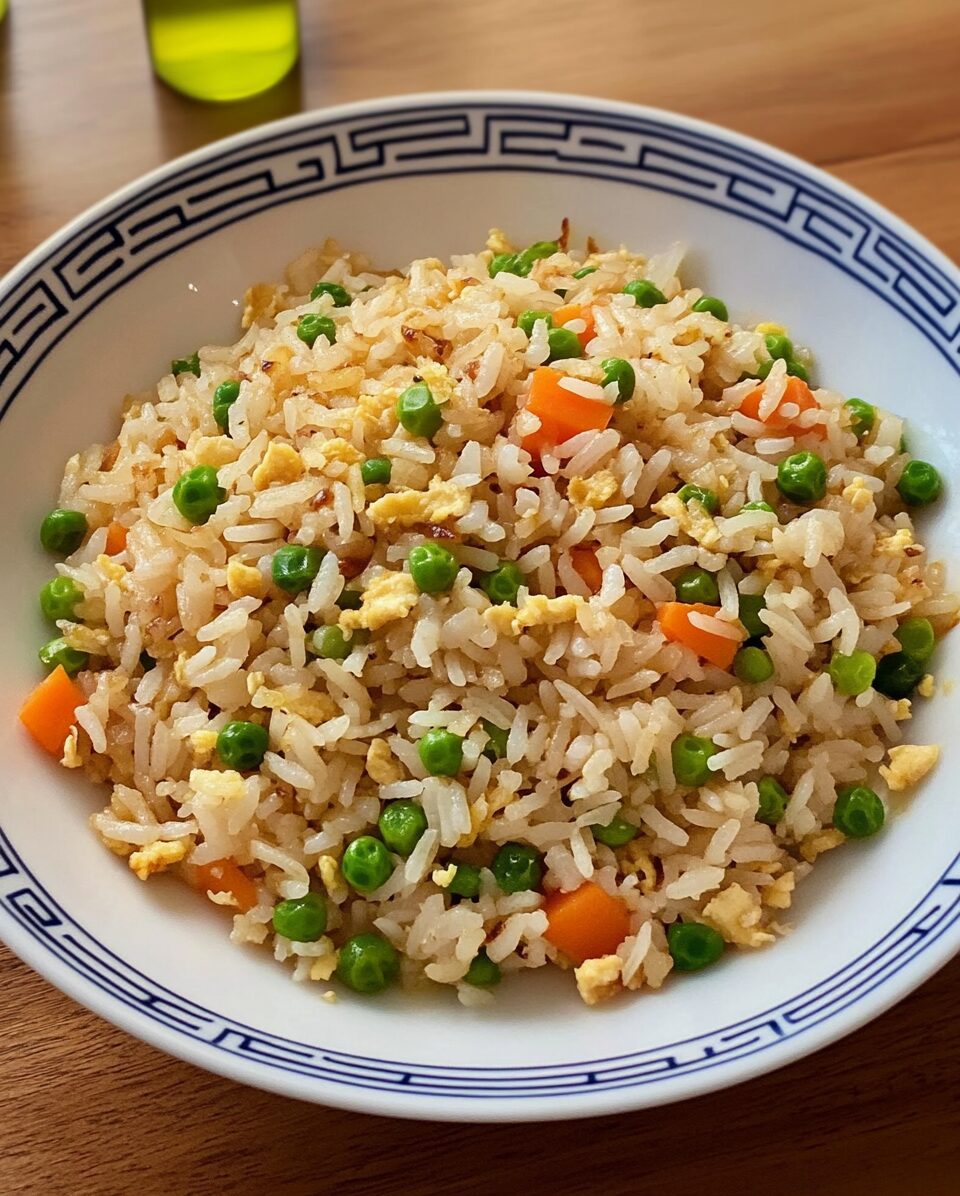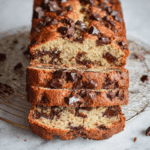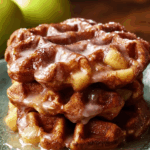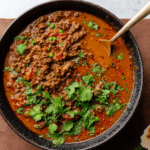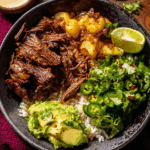This fried rice recipe is inspired by the flavors of classic takeout dishes, offering a simple yet savory mix of tender vegetables, scrambled eggs, and perfectly seasoned rice. A dash of soy sauce ties all the ingredients together, creating a comforting and flavorful dish that can be ready in just 40 minutes.
Whether you’re looking for a quick weeknight meal or a satisfying lunch, this fried rice delivers on taste and convenience. The best part is that you can easily customize it with your favorite vegetables or protein to make it your own. It’s a one-pan wonder that the whole family will love!
Full Recipe:
Ingredients:
- 2 cups white rice, uncooked
- 4 cups water
- 2/3 cup chopped baby carrots
- 1/2 cup frozen peas
- 2 tablespoons vegetable oil, divided
- 2 eggs
- Soy sauce to taste
- 4 green onions, chopped
- Salt and pepper to taste
Directions:
- In a saucepan, bring water to a boil. Add rice and stir. Reduce heat, cover, and simmer for 20 minutes. Once cooked, set aside.
- Heat 1 tablespoon of oil in a large skillet or wok over medium heat. Add the carrots and peas; cook until tender, about 3 to 5 minutes.
- Push the vegetables to one side of the skillet and pour the beaten eggs onto the other side. Scramble the eggs with a spatula and cook until firm.
- Stir in the cooked rice and mix with the vegetables and scrambled eggs.
- Add soy sauce to taste, mixing well to coat the rice. Stir in the green onions, and season with salt and pepper as needed.
- Heat everything thoroughly for about 5-7 minutes, stirring occasionally. Serve warm.
Prep Time: 10 minutes | Cooking Time: 30 minutes | Total Time: 40 minutes
Kcal: Approximately 250 kcal per serving | Servings: 4
Recipe Background and Significance
This recipe is inspired by the classic fried rice dishes found in Chinese restaurants. It’s a perfect way to make use of leftover rice and incorporate various ingredients you might have on hand, making it not only economical but also versatile and customizable to different dietary needs. Fried rice is believed to have originated in China during the Sui Dynasty (589–618 AD), where leftover rice was stir-fried with various vegetables and meats to create a new meal. It became a popular staple due to its simplicity and ability to transform basic ingredients into a delicious and satisfying dish.
Key Components of the Recipe
- Rice: The primary ingredient is cooked white rice. For the best results, use rice that has been cooled or refrigerated, as it helps prevent the grains from clumping together. This is why leftover rice is ideal.
- Sesame Oil: Adds a nutty, aromatic flavor to the dish, setting it apart from other types of fried rice. Using sesame oil in the initial stages of cooking helps release its fragrance and enhances the dish’s overall taste.
- Vegetables: This recipe uses a mix of frozen peas and carrots, but feel free to add other vegetables like bell peppers, mushrooms, or broccoli, depending on your preference or what you have available.
- Eggs: Scrambling the eggs directly in the skillet with the vegetables adds a creamy texture and a hint of richness to the dish.
- Soy Sauce: Provides the salty, umami flavor that is essential for fried rice. You can use light soy sauce for a milder flavor or dark soy sauce for a richer, caramelized color.
- Green Onions: Adds a fresh, crisp element and a pop of color that balances the flavors of the dish.
Tips for Perfect Fried Rice
- Use Day-Old Rice: Freshly cooked rice can be too moist and sticky for fried rice. If you don’t have day-old rice, spread freshly cooked rice on a baking sheet and refrigerate it for 30 minutes before cooking.
- High Heat Cooking: Using a high heat ensures that the rice cooks quickly and evenly without becoming soggy.
- Customize the Protein: While this version is vegetarian, you can easily add proteins like shrimp, chicken, or tofu. Cook the proteins separately and mix them in at the end to prevent overcooking.
- Avoid Overcrowding the Pan: If you’re making a large batch, consider cooking the rice in batches to maintain the ideal texture.
Nutritional Information
This recipe is relatively balanced, offering a good mix of carbohydrates from the rice, protein from the eggs, and various vitamins and minerals from the vegetables. If you’re looking for a healthier version, consider using brown rice or adding more vegetables like kale or spinach.
Variations of Fried Rice
This recipe can be adapted in many different ways depending on the flavor profile and ingredients you prefer. Here are some popular variations:
- Chicken Fried Rice: Add diced chicken breast or thighs for an added source of protein. The chicken should be cooked first until golden brown before being set aside and added back into the dish towards the end of cooking.
- Shrimp Fried Rice: Use medium-sized shrimp, cleaned and deveined, and sauté them with a bit of garlic and salt before adding them to the rice. Shrimp adds a subtle sweetness and works well with the other savory elements of the dish.
- Pineapple Fried Rice: For a tropical twist, add pineapple chunks to the fried rice. The sweetness of the pineapple contrasts beautifully with the savory soy sauce, making it a popular choice in Thai-inspired fried rice.
- Kimchi Fried Rice: A Korean twist on the classic fried rice, kimchi adds a tangy, spicy flavor that pairs well with the eggs and rice. You can also add gochujang (Korean chili paste) for an extra kick.
- Bacon or Ham Fried Rice: Crispy bacon or diced ham can add a smoky, salty flavor to the dish. Add these ingredients at the beginning to render out the fat, which can then be used to sauté the vegetables.
- Cauliflower Fried Rice: For a low-carb option, replace the white rice with riced cauliflower. This makes for a lighter dish that’s still packed with flavor and nutrients.
Enhancing the Flavor
- Soy Sauce Varieties: Consider using different types of soy sauce to enhance the depth of flavor. Light soy sauce is more delicate and adds saltiness, while dark soy sauce is thicker and sweeter, giving the rice a richer color. You can also use tamari if you prefer a gluten-free alternative.
- Sesame Oil: Toasted sesame oil is ideal for this recipe because it imparts a rich, nutty flavor. Be careful not to use too much as it can easily overpower the dish. You can drizzle a bit more at the end for added aroma.
- Oyster Sauce: Adding a small amount of oyster sauce provides a hint of sweetness and an extra layer of umami flavor that complements the soy sauce.
- Seasoning Alternatives: If you want a bit of heat, add chili flakes or a few dashes of hot sauce. You can also use white pepper for a mild, earthy spice that’s commonly used in Chinese cuisine.
- Garnishing: Garnish with chopped cilantro or a sprinkle of sesame seeds for a fresh finish. If you enjoy spice, add a few slices of fresh chili or a drizzle of sriracha sauce on top.
Cooking Techniques
- Wok vs. Skillet: Traditional fried rice is best made in a well-seasoned wok. The high heat and curved surface of the wok allow for even cooking and prevent the rice from becoming mushy. However, if you don’t have a wok, a large non-stick skillet will work just fine.
- Stir-Frying Method: The key to perfect fried rice is to keep everything moving in the pan. Use a wooden spoon or spatula to continuously stir and toss the ingredients, ensuring they cook evenly and don’t stick to the bottom of the pan.
- Adding Rice in Batches: When adding rice to the pan, do it in small batches. This ensures that the rice is evenly coated with the soy sauce and doesn’t become clumped together.
- Cooking on High Heat: High heat is essential for achieving the characteristic slightly crispy texture of restaurant-style fried rice. It helps the rice grains to separate and prevents them from steaming in the pan.
Serving Suggestions
Fried rice is traditionally served as a main course in a large serving bowl, allowing everyone to help themselves. For an extra special touch, serve the fried rice in a hollowed-out pineapple or a large lettuce leaf. This adds a stunning presentation element and makes it easy for guests to enjoy.
You can also complement this dish with side items like:
- Spring Rolls: Crispy vegetable or shrimp spring rolls are a wonderful accompaniment.
- Hot and Sour Soup: A tangy and slightly spicy soup that pairs well with the savory flavors of fried rice.
- Dim Sum: Small steamed or fried dumplings filled with meat or vegetables can be served as appetizers.
Storage and Reheating Tips
If you have leftovers, store the fried rice in an airtight container in the refrigerator for up to 3 days. When reheating, add a splash of water or a few drops of soy sauce to prevent the rice from drying out. You can reheat it in a microwave, but the best method is to use a skillet over medium heat, which will help retain the texture and flavor.
Perfect for Meal Prep
Fried rice is an excellent option for meal prep as it retains its flavor and texture even after a few days in the fridge. You can portion it out into individual containers and pair it with different proteins or vegetables for a variety of meals throughout the week.
Conclusion
Fried Rice, Restaurant-Style, is a delicious, versatile dish that’s easy to make and perfect for any meal. Whether you’re using leftover rice or trying new variations, it delivers restaurant-quality flavors in the comfort of your home. Enjoy experimenting and making it your own!

